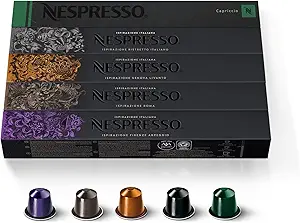Coffee is more than just a beverage—it is a ritual, a tradition, a social glue, and in many places, a daily necessity. Across the globe, coffee plays a central role in various cultures, influencing how people connect, unwind, and even work. From Italy’s strong espresso shots to Ethiopia’s elaborate coffee ceremonies, the world’s love affair with coffee is rich, diverse, and deeply rooted in history.
Table of Contents
In this blog, we take you on a journey to discover how different countries embrace coffee, highlighting unique customs, brewing methods, and the cultural significance of coffee in daily life.
Italy: The Home of Espresso and Coffee Etiquette
When it comes to coffee, Italy is arguably the most iconic nation. Italians have mastered the art of espresso, and their coffee culture revolves around simplicity, speed, and quality. A typical Italian starts their day with a quick shot of espresso, often standing at the bar of a local café.
Interestingly, there are strict rules about when to drink certain types of coffee. For example, ordering a cappuccino after 11 a.m. is considered a faux pas. Coffee in Italy isn’t just about the drink itself; it’s about tradition, social interaction, and maintaining culinary customs.
Ethiopia: Coffee’s Birthplace and Spiritual Experience
Ethiopia holds a special place in the coffee world as the birthplace of Arabica coffee. Here, coffee is more than a drink—it’s a sacred ceremony. The traditional Ethiopian coffee ceremony is a lengthy, communal affair that involves roasting green coffee beans, grinding them by hand, and brewing the coffee in a jebena (a clay pot).
This process can take hours and is often accompanied by conversation, storytelling, and the burning of incense. It’s a symbol of hospitality and is an essential part of Ethiopian social life. Drinking three rounds of coffee during the ceremony is customary, as each round carries a specific cultural meaning.
Japan: Precision, Aesthetics, and Innovation
Japan’s coffee culture combines meticulous craftsmanship with modern innovation. While tea has deep historical roots in Japan, coffee has gained enormous popularity, especially in urban areas. Japanese cafés are known for their quiet ambiance, attention to detail, and beautifully presented coffee drinks.
Pour-over methods like the Hario V60 and siphon brewing are popular in Japan, reflecting the country’s appreciation for precision and ceremony. Convenience is also a priority, as evidenced by canned coffee available in vending machines throughout the country. This unique blend of tradition and technology makes Japan’s coffee culture especially fascinating.
Turkey: A UNESCO-Protected Ritual
Turkish coffee is an intangible cultural heritage recognized by UNESCO. It is traditionally brewed in a small pot called a cezve and served unfiltered in tiny cups. Ground coffee, water, and sugar (if desired) are simmered over low heat, and the resulting beverage is thick, rich, and strong.
In Turkey, coffee is about much more than taste. It’s deeply tied to hospitality, engagement rituals, and fortune-telling. After drinking, it’s common for someone to turn their cup upside down to read the patterns left by the coffee grounds, a practice believed to foretell the future.
Nespresso Capsules Original Line, Ispirazione Variety Pack
Brazil: A Coffee Powerhouse with Deep Roots
Brazil is the world’s largest coffee producer, and its coffee culture reflects both quantity and quality. In Brazil, coffee is an everyday beverage enjoyed by people from all walks of life. One of the most popular styles is cafezinho, a small, strong, and sweet coffee often served to guests as a gesture of warmth and welcome.
Coffee is a fundamental part of Brazilian hospitality. Whether you’re visiting someone’s home or walking into a shop, you’re likely to be offered a cafezinho. The drink is quick to make and quick to drink, emphasizing friendliness and accessibility.
France: Cafés, Culture, and Leisure
In France, coffee culture is intimately tied to the country’s café lifestyle. French cafés are social hubs where people meet to relax, discuss ideas, or simply watch the world go by. The most popular coffee style in France is the café au lait, typically enjoyed in the morning alongside a pastry.
Unlike the Italian approach to fast coffee, the French prefer a slower, more leisurely experience. Coffee is sipped, not gulped. Cafés often have outdoor seating, allowing patrons to sit for hours, reading a book or chatting with friends, making coffee part of a broader cultural experience.
Vietnam: A Bold and Unique Flavor Experience
Vietnam offers one of the most distinctive coffee cultures in the world. Vietnamese coffee is strong, sweet, and often unconventional. Brewed using a phin filter, the coffee drips slowly into a glass and is often served with sweetened condensed milk. The result is cà phê sữa đá—a rich iced coffee with bold flavors.
Vietnamese coffee culture is innovative. Popular variations include egg coffee, made with whisked egg yolks and sugar, and yogurt coffee, which combines the tartness of yogurt with the bitterness of coffee. These drinks are served in cozy cafés that double as creative spaces and social lounges.
Sweden: Fika and the Social Side of Coffee
In Sweden, coffee is central to the cultural practice of fika, which means taking a break with coffee and pastries. But fika is more than a coffee break—it’s a treasured ritual that emphasizes mindfulness, connection, and balance.
Swedes drink some of the highest amounts of coffee per capita globally. Fika is an expected part of the day, whether at work or home, and is always shared with others. Coffee is usually brewed strong and black, often enjoyed with kanelbullar (cinnamon buns) or other sweets.
United States: Diversity and Third-Wave Coffee
The U.S. has one of the most diverse coffee cultures in the world. From diner drip coffee to artisanal third-wave cafés, American coffee culture is characterized by variety and innovation. Coffee consumption here is both utilitarian and experiential.
Major chains like Starbucks have popularized espresso-based drinks, while smaller specialty coffee shops focus on sourcing ethical beans, experimental brewing methods, and creating community spaces. Cold brew, nitro coffee, and plant-based milk alternatives are trends that began in the U.S. and spread worldwide, reflecting the country’s dynamic and ever-evolving coffee scene.
Australia: Quality-Driven and Independent
Australia’s coffee culture is sophisticated and fiercely independent. Cities like Melbourne and Sydney are known for their specialty coffee scenes, where local cafés focus on perfecting drinks like the flat white. Chains rarely dominate here—most Australians prefer local, independent coffee shops that offer high-quality, barista-crafted beverages.
Coffee is deeply tied to lifestyle in Australia. Brunch culture thrives, and cafés often double as social and creative spaces. The emphasis is on sustainability, ethical sourcing, and top-tier craftsmanship, making Australia a leader in the global specialty coffee movement.
The Global Impact of Coffee Culture
What makes coffee culture so fascinating is its dual role as both global and hyper-local. While coffee is consumed in nearly every corner of the world, the way it is prepared, served, and experienced varies dramatically. These cultural nuances enrich our understanding of not just coffee, but of human connection, values, and tradition.
From the meditative calm of a Japanese pour-over to the social buzz of an Ethiopian ceremony, coffee is a mirror reflecting society. It’s both a personal ritual and a communal experience, a moment of solitude and a celebration of togetherness.
FAQs About Coffee Cultures Around the World
Q: What is the most unique coffee culture in the world?
A: Ethiopia’s coffee ceremony is often considered the most unique due to its deep spiritual and social significance, traditional preparation methods, and the communal aspect of sharing three rounds of coffee.
Q: Which country drinks the most coffee per capita?
A: Finland leads the world in per capita coffee consumption, with the average person drinking about four cups per day, usually light roasted and consumed during multiple daily coffee breaks.
Q: What is third-wave coffee?
A: Third-wave coffee is a movement that treats coffee as an artisanal product rather than a commodity. It focuses on high-quality beans, direct trade, sustainable sourcing, and precise brewing methods to bring out the unique flavors of each coffee origin.
Q: Why is coffee so important in global cultures?
A: Coffee plays a vital role in social interaction, hospitality, and even spiritual practices. It’s a universal beverage that adapts to cultural contexts, making it both globally recognized and locally cherished.
Q: How is coffee traditionally served in the Middle East?
A: In many Middle Eastern countries, coffee is prepared with cardamom and served in small cups without sugar. It often accompanies social gatherings and is an important gesture of hospitality.











